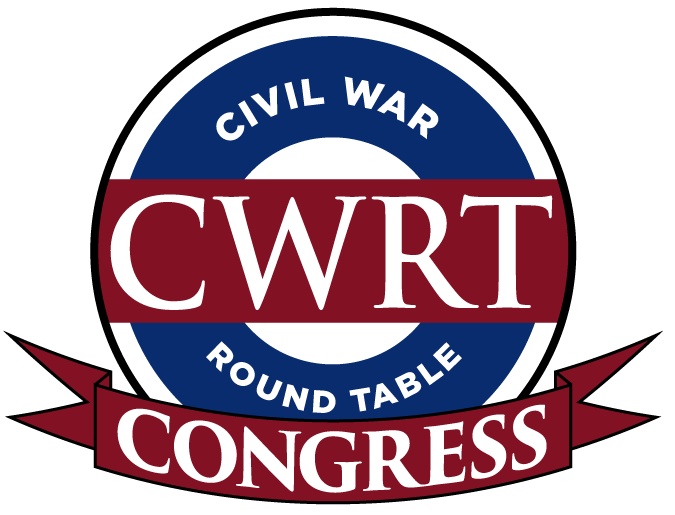The Civil War Zoom Boom, part three: The Civil War Roundtable Congress
 (part three in a series)
(part three in a series)
Since the COVID-19 lockdown began, Zoom has boomed for the Civil War community, offering buffs a plethora of programs, interviews, and other great content. (And not just the Civil War world, either—take a look at “Rev War Revelry” on our sister site, Emerging Revolutionary War.)
Mike Movius, president of the Civil War Roundtable Congress, recognized early on that roundtables would be looking for ways to make up for canceled meetings. Aside from the lost programming, Movius recognized that some roundtables would lose momentum without the energy provided by their regular meetings.
To fill the void, Movius envisioned a series of Zoom-based programs presented by the Congress that could substitute for in-person roundtable meetings. Under Movius’s model, roundtables themselves could subscribe to programs and make them available to their members in lieu of meetings, or individual members could sign up and watch, and proceeds went to support the Congress’s efforts to support roundtables.
Because of tech limitations, lectures were capped at 100 “attendees,” and the Congress has been hitting that ceiling at just about every session. The lectures are offered for free, but the Congress—a 501(c)3—does accept donations. So far, the Congress has raised more than four thousand dollars to support its education efforts. (Click here to see more about the Congress’s valuable mission to help CWRTs: cwrtcongress.org.)
CM: You recognized early on that there would be a need for content because roundtables wouldn’t be able to hold meetings. How did you parlay that into video programs?
MM: I had been using zoom.us for several years to conduct meetings and at least one webinar. So, being familiar with the power of distance learning—I had also been the project manager for developing several distance-learning rooms for colleges and universities—and having a ready list of 5-star speakers on our website, I asked those individuals if they would be interested in online presentations. I’ve also mentored some roundtables in using Zoom. The rest is history, so to speak.
CM: There’s a lot of content out there now, and most of it is free. You chose to take a different approach and ask for donations for content. Why? How has that worked out?
MM: The lecture series is absolutely free, but we accept donations to help augment the costs involved in producing the content and making it available. We have plans to increase viewership. When the series ends the evening of June 30, 2020, we will have all the lectures on YouTube. Our hope is that as CWRTs begin to hold meetings again, they can tap into that resource as can individuals. All that can only occur based on the generous donations of our patrons.
CM: Have you tried to take a particular angle with the content you’ve created?
MM: Not being a historian, nor someone who has developed programs for a CWRT, that did not occur to me. Although several of the discussions nicely suggest that, it only occurred by happenstance.
CM: Have there been any particular challenges?
MM: Early on, I had a great discussion with historian David Dixon. He was the one who suggested recording the actual presentations, but being live before and after the recording. His thinking was that there are so many variables in these types of presentations that it would be prudent to eliminate at least one. And, he was absolutely correct. In point of fact, one author had to do six takes before the network issues were surmounted. If that would have been real-time, no one would have returned.
There were other challenges. One was scheduling. I had an order in mind when I met the author/historians online, but that quickly fell through when they discussed their availability. Next was that several repeat their talks at a later date. I had to develop a system to distinguish between an April presentation and one in June—both for my sanity and for registrants.
Finally, we started out with a donation system linked to PayPal. It was a nightmare for donors and equally so for the webmaster. About a month into the series and after many minor and some major adjustments, we abandoned the PayPal link and went with WePay. WePay is directly linked to our contact database and practically automates itself.
CM: How have the sessions helped the overall visibility of the CWRT Congress?
MM: A great question and one that probably doesn’t have an objective answer. However, I can say that due to the series, we have increased the number of individual contacts by well over 200. That will prove itself out in terms of our 2021 CWRT Congress attendance. But, in the meantime, the resources we have developed for our website are becoming better known and used more, and we are receiving suggested additions.
CM: Anything I haven’t asked on the subject that you’d like to add?
MM: Yes. Each of the ladies and gentlemen who have donated their time, talents and efforts to provide this content have been amazingly generous. And, we have developed a wonderful relationship we each of them. CWRT Congress highly recommends CWRTs to seriously consider these individuals for upcoming meetings. Listen to their analysis, ask questions and buy their books!
————
For more information on the Civil War Roundtable Congress’s lecture series, click here.
Mike is to be commended for recognizing the challenge the pandemic would pose, especially to smaller Round Tables. He moved aggressively to put together an ongoing series of excellent speakers on interesting topics to keep the stay-home members entertained and educated at this time when almost all, if not all, Round Tables have suspended their in-person programming.
Mike made it work with foresight, perseverance and know-how. All the credit his his.